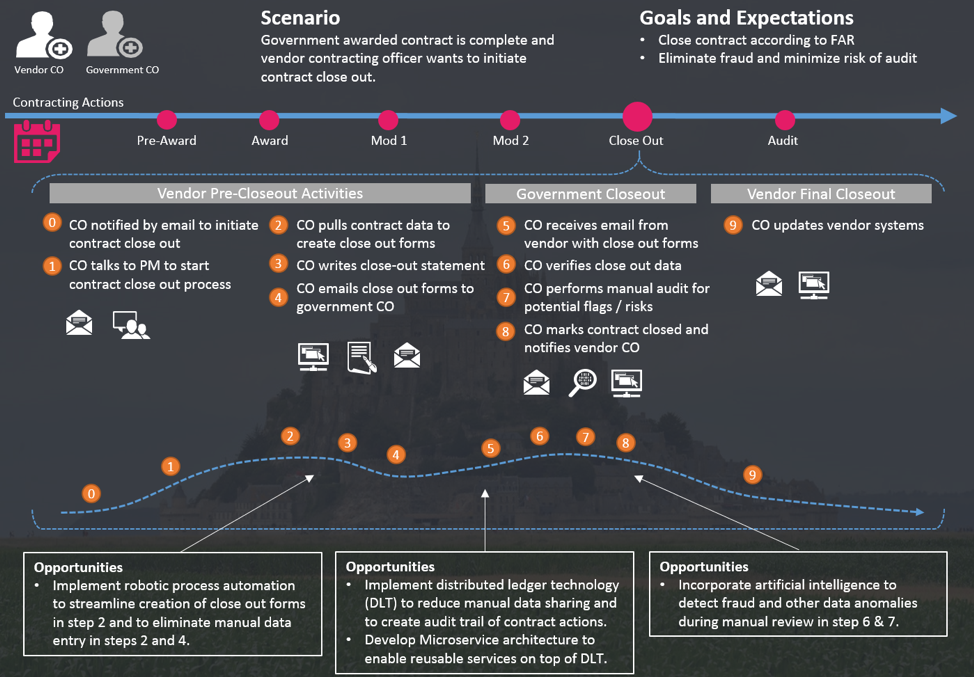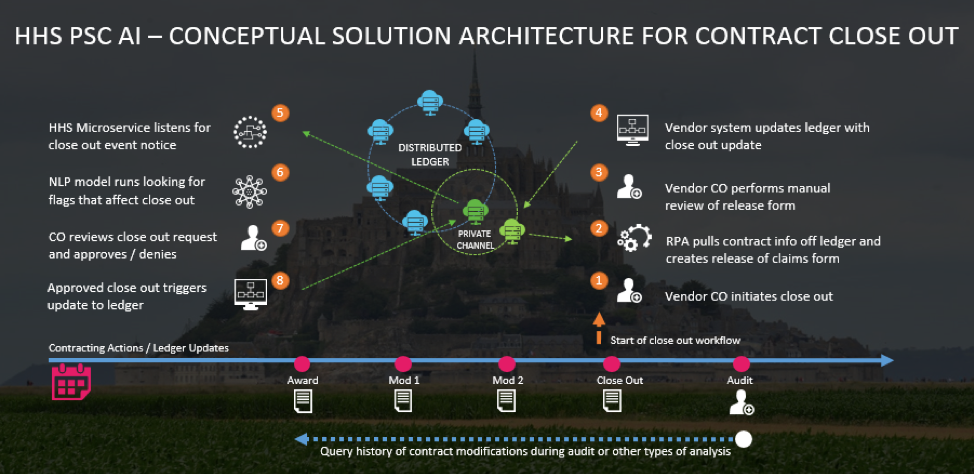The hidden blockchain benefit: Knowing what we know
Modern technologies allow for a scalable, bottom-up solution that can accommodate small and large projects.
Federal departments and agencies face a problem common to any large bureaucracy: how does an organization truly understand how much data they already have at their disposal—and what it all means? That is, how do we get to a point where we know what we already know?
Information technologists have long recognized that previous solutions—electronic forms, scanned pages, or physically transferring paper forms from location to location—are hopelessly inefficient, and that the first IT wave of electronic forms or scanned pages manually entered into a database are not sustainable solutions. Enterprise-wide central databases are now mature (if expensive) solutions, but extending these solutions outside of the enterprise to include other federal, state, local, international, non-profit, and commercial stakeholders is still a financially and technically challenging endeavor. A successful implementation requires a top-down architecture and development of an integrated hardware and software suite for every node of the network.
In place of the “big bang” solution described above, modern technologies such as Blockchain, distributed ledger technology (DLT), robotic process automation (RPA), and machine learning allow for a scalable, bottom-up solution that can accommodate small projects (e.g., allowing a motor pool to track its inventory and suppliers) and large ones (e.g., the contracts system for DoT with its entire network of suppliers, vendors, etc.)
By starting with a small problem—for example, the contracts close-out system—an agency could eventually and incrementally develop a distributed contracts records system. Our team did just that.
Case study: contracts close-out system
Our premise: we could use distributed ledger technology, robotic process automation, and machine learning to streamline how the government and vendor community conduct business together. After several whiteboard sessions where our team excitedly sketched the federal acquisition lifecycle on the whiteboard, we quickly realized were going to need to start small. We chose the acquisition close-out process as a starting point because it was a narrow sliver of the acquisition lifecycle that that enabled us to build toward a minimally viable product (MVP).
Before jumping into building the MVP, however, we needed to understand the activities contracting officers perform during contract close out. Our user experience specialists conducted user research with current and former contracting officers to understand the business processes that would need to change as a result of implementing distributed ledger technology. Figure 1 depicts the current-state business processes between vendor and government contracting officers during contract close out. Highlights of Figure 1 include the following:
- The top section shows the personas, scenario, and goals and expectations of the user experience we examined. It also includes a timeline to depict the sequent of contract actions that occur during the lifecycle of a contract. Our focus was contract close out.
- The middle section shows the journey COs follow during contract close out. It is divided into three phases: vendor pre-closeout, government closeout, and vendor final closeout. Within each phase, we show the high-level activities COs perform.
- The bottom sections shows where we identified opportunities to apply DLT, robotic process automation, microservices, and artificial intelligence to streamline the contract close out business processes.

With the user research complete, our application developers and data scientists worked together to build the MVP. We sketched our solution as we started to build it out. The sketches helped solidify a common understanding about the problem we were trying to solve. In some cases, we sketched on pen and paper; other times, we used PowerPoint and other design tools. They weren’t fancy, but fancy wasn’t our goal: we wanted to demonstrate that we understood the solution end-to-end.
We developed the below sketch, for instance, to show how our entire solution would come together. In the middle, we show the distribute ledger we created using Hyperledger Fabric. At the bottom, we show the timeline of contracting actions that occur during the life of the contract. Then the numbered sequence of events show the workflow of what happens during contract closeout, including where we incorporated RPA, microservices, and machine learning.

Finally, our entire effort would not have been possible without enabling technology and processes such as Cloud and Agile. Our Cloud engineering team was able to quickly spin up and shut down sandbox environments for us so we could explore new ideas. Agile helped keep us on track. The key for us was to keep pushing the ball down the field without getting too caught up in needing all the details.
This was a great experiment for us to explore how emerging technologies, such as Blockchain, RPA, and machine learning can help solve real business problems. Starting small and assembling an integrated team really helped propel us forward. We will continue to experiment with these emerging technologies as we work with our clients to solve real business problems.
How have you been using emerging technologies to create scalable solutions? Tell us more about your experiences on LinkedIn, Facebook, and Twitter.
